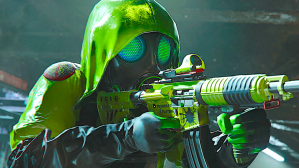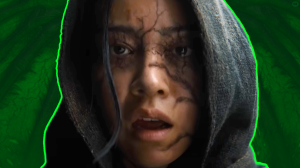Anatomy of a D&D Campaign is a week-by-week look at the planning of Dungeons & Dragons sessions. While D&D 101 looks at broader topics, Anatomy of a D&D Campaign will dig a little deeper into technical elements, with discussions about encounter design, crafting unique monsters, and handling unique challenges that come up at the table.
Videos by ComicBook.com
—
After several weeks of conceptual planning and worldbuilding, the time has come to start my new D&D campaign. Past columns explained how my party came up with an initial concept for a campaign and then how I fleshed out their ideas into the foundation of a new campaign setting. Now comes the tricky part – planning a first session that both sets the tone for the rest of the campaign and introduces players to each other and the some of the threats they may deal with over the course of our story.
My new campaign is about a group of cultists trying to free their “god,” an obnoxious young occult dragon named Krona, so that the dragon could stop a potential world ending threat of his own making. Going into this campaign, I had a good idea of my players’ likes and dislikes, since all four of my players have played together for over two years at my table and are among my best friends. When thinking about how to build an opening session, I knew that my players love moderate roleplaying interacting with goofy NPCs and rely equally on ingenuity and brute force tactics to solve challenging encounters. This is a group that enjoys to laugh as much as they enjoy challenging combat encounters and building a story together.
Luckily – the new campaign premise has room for both silliness and serious encounters, so I tried to build both into the group’s first “mission,” which mainly served as a chance for the players a chance to try out their new abilities and class features. While I wouldn’t give my players their main story hook just yet, I did want to introduce them to the Unflinching Knights, a religious order planned as a secondary antagonist for the story. While my players were trying to free their god and save the world, they also needed to watch out for these cultist-hunting Knights.
My players don’t mind a bit of straightforward “railroading,” so I decided to give them a relatively linear first encounter that would pit my players against the Unflinching Knights and give them a chance to blow some stuff up. The players would be tasked by their cult leader to team up with members of several other cults to destroy a recently established Unflinching Knights outpost at the edge of an abandoned city. One of the other cult groups would offer to use a ritual to blow up the outpost, but they would need to be protected as they cast their destructive spell.

I initially opted to make this a “wave” encounter, with multiple groups of knights storming out of their headquarters as players protected the cultists casting the ritual spell. Since the Unflinching Knights worshipped a god known as the Stone, I leaned heavily on the Black Earth Cult from Princes of the Apocalypse as the foundation for my enemies, since their abilities mostly matched up with how I envisioned the Knights. After all, why create a new monster statblock when you can repurpose an existing one? I set up the waves as follows:
- 3 Guards (CP 1/8), 1 Knight (CP 3)
- Reskinned Black Earth Guard (CP 2), Reskinned Black Earth Priest (CP 3)
- Reskinned Stonemelder (CP 4), 3 Guards (CP 1/8)
According to Kobold Fight Club, these three encounters totalled 4,850 XP – the maximum XP my players could face in a day. Since there were eight other cultists available to help, I had some options in case the encounter proved overwhelming. The constant stream of enemies put pressure on my players, but there were also enough low CP enemies that could be killed with one hit to even out the action economy. I also decided to hold back the spellcasting enemies’ highest level spells unless the players were breezing through the encounter with little resistance.
After building the encounter, I realized a potential flaw with my plans. What if the players wanted to explore the headquarters and take the fight to the knights instead of guard the cultists? While the players told me in advance that they didn’t mind being railroaded, I didn’t want to force them into fixed scenarios so early in the campaign.
To provide the players with options, I quickly sketched out what the headquarters would look like and populated with the enemies from the waves. I even tossed in a few magic items and sacks of hidden gold in case they decided to loot the place as they were battling the knights. Because the players would be entering an enemy base instead of waiting outside of it, I also added a few more guards to fill some of the rooms and make the encounter a bit more challenging, keeping in mind that I still had friendly NPCs to lend the players a hand in case things got hairy.
So – I now had a fully fleshed out enemy outpost, complete with multiple options available to the party. With the encounter out of the way, I now needed to create both the cult leader who would give out the quest to the players, along with the other cultists that would be joining the party in the quest. To give the session a lighter tone, I worked on a few ridiculous NPCs for the party to meet.
Because the players had agreed that none of the characters were too bright, the cult leader ended up being a group of four kobolds hiding in a stuffed dummy. Not only did it make sense for kobolds to worship a dragon as a god, it also provided some flavor to the cult leader’s demands of shiny things and slightly spoiled fruit. To let the players in on the joke, the “cult leader” was named Forkobolds and acted very obviously like four kobolds. The other cults were equally ridiculous – one cult (consisting of a group of Yuan-ti and one human named Patrick that wore snake face paint) worshipped a snake god named Snakules, while another group worshipped a cat god named the Uncaring and dressed themselves to look like characters from CATS: The Musical, complete with TS Eliot names. It was all very dumb, but the players bought into the humor in moments, quickly coming up a chant and synchronized hand gestures and laughing at Forkobolds’ antics.

In the end, the players chose to guard the cultists instead of entering the headquarters, deciding that it made sense to let the inferior NPC cultists act as cannon fodder, while the players served as a backstop. As expected, the players exhausted just about all of their spell slots and resources by the end of the third wave – dispatching all but the Stonemelder without any NPC assistance. The higher AC enemies lingered longer than expected, but the only real challenge was the Stonemelder, who caught the party paladin with a natural 20. Since the Stonemelder has a Smite-like ability that adds extra D8s to his damage pool, I thought we might have our first casualty, but the paladin had luckily chosen Adamantine Armor as his one Uncommon Magical Item (a perk I gave players when they built their characters), so he only got knocked out instead of suffering a potential 6D8 of damage in one blow.
To assist the players and speed up the end of the encounter, Patrick the Snake Cultist assisted the players by choking the Stonemelder with a Rubber Snake just as the other cultists completed their ritual. Patrick also served as a sacrifice of sorts, as the encounter ended with the “real” Unflinching Knight, a towering behemoth wielding a massive sword, lumbering out of the headquarters as lava started to erupt from the earth as a result of the ritual. With a single swing of his sword, he cut poor Patrick in two and reminded the players that fantasy worlds are very rarely kind to cultists. As the players wisely decided to flee, the Unflinching Knight stepped into the lava as if to chase after them. And while the Unflinching Knight didn’t leave the outpost as it filled with lava and collapse, who’s to say that the same Knight won’t pop up again later in the story?
Next week, we’ll talk about delivering the main story hook for a campaign. How much planning should you do, how do you hold the player’s interest, and when should you deliver it? Let us know what you design and planning elements you want to see discussed in the comment section or find me on Twitter at @CHofferCBus to talk all things D&D!





